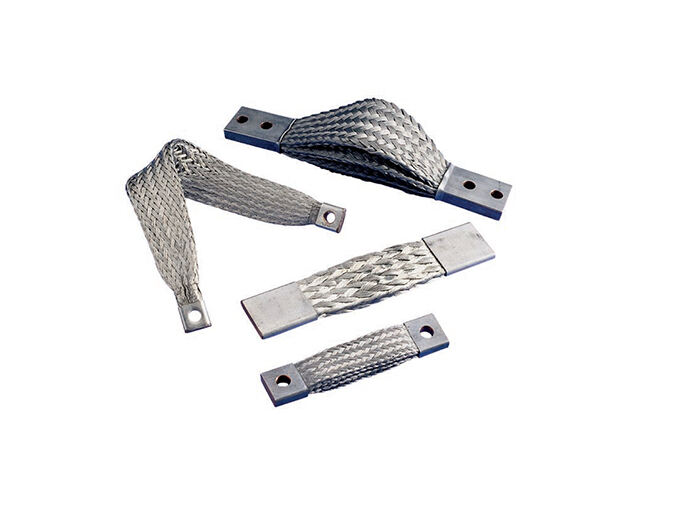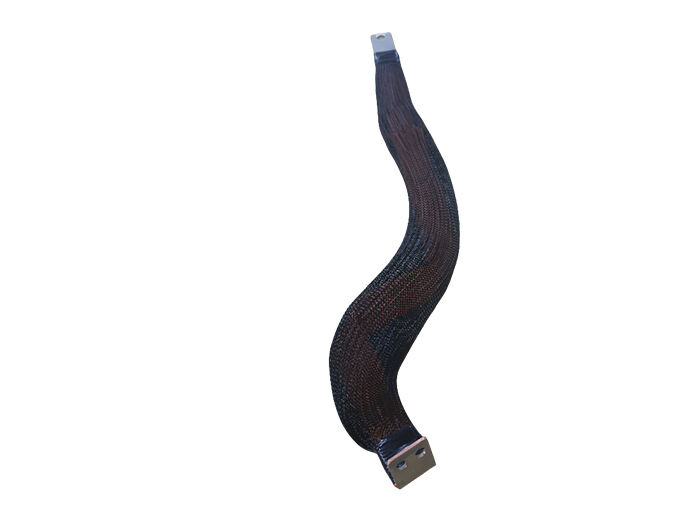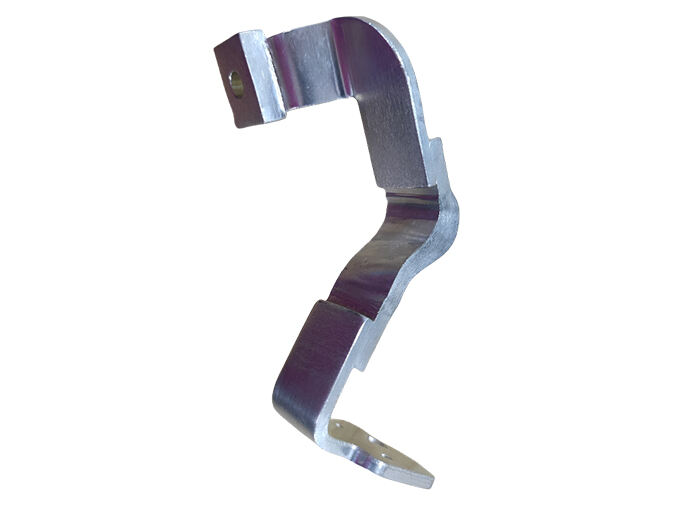But the strategy becomes imperfect due to lack of small busbars, which represents a flourish solution for combining energy savings with space optimization in electrical power distribution universe. These little powerhouses are essential in the world of modern electrical systems as they can carry large currents with minimal space taken up on a circuit board. The growing demand for innovative solutions to improve electrical efficiency without compromising reliability or scalability as technology becomes more advanced.
Low heat is generated while conducting electricity, so small busbars can be used when compared to larger single piece conductors comprised of copper and aluminum. This highly efficient cooling procedure may not only improve the total system performance, but it also opens up opportunities to save costs and support sustainability initiatives. The fact that they are so close together means cooling can be done easily, further reducing energy use and supporting green initiatives.
Industries such as aerospace, data centers and electric vehicles frequently run into these space constraints. Lower-power solutions allow engineers to pack in more horsepower performance while maintaining size constraints. Their flexibility helps enable custom configurations that can be designed to meet unique spatial requirements, and this could eventually phase out conventional wiring practices. Cutting-edge technologies such as 3D printing and modular designs have increased the adaptability still further of small busbars to meet changing requirements in modern-day engineering challenges.
Small bus bars not only increase the space efficiency but also significantly help in reinforcing energy infrastructure. These components can sustain high current densities, enabling the future transition to higher density power distribution needed as renewable energy sources and microgrid systems take hold. They enable the dynamic management of loads, allow fast response to changes in demand and help maintain grid stability. Additionally, their robustness in extreme environmental enclosures provide continuous energy supply - an essential element that is key to the sustainability of energy.
For the future, low tolerancing busbars for high-density power distribution will grow in importance. The demand for efficient and reliable power transmission is at an all-time high with the advent of electric vehicles, smart cities, and Industry 4.0 technologies Busbars - Small bus bar it will drive charging infrastructures for EVs, data center power requirements and future factories with advanced Power management systems. Their scalability, in turn, provides the flexibility necessary to meet new technological requirements and cements them as key components of sustainable and resilient power systems.
Its seamless integration of tiny busbars into complex systems is one of its main benefits. With modularity as a focus feature, installation replace and service can be ultra-rapid while associated downtime is minimized too reducing costly facility interruptions. Pre-terminated with connectors and standard interfaces, small busbars are easier to connect compared to the more traditional type of large-hardware heavy connectors which were developed for use in AFCs. Today, simulation software makes it possible to model and optimize the busbar layout well before engineering any part optimally performing from day 1. These are ideal reconciliting and adabtable capabilities in such a dynamic world of systems.
In conclusion, little busbars are a game-changer for efficient and space-saving power distribution. Their importance as tools in the modern electrical engineers' arsenal cannot be overstated: maximizing electrical efficiency, adapting to space-constrained applications, enhancing energy infrastructure, shaping the future of high-density power distribution and seamlessly integrating into complex systems. When technology marches on and pushes new limits, small busbars lead the way influencing changes in designs that reduce energy consumption for a more environmentally friendly future.
Efficiency is the cornerstone of any well-designed electrical system, and small busbars significantly contribute to this goal. By using high-conductivity materials such as copper or aluminum, these busbars minimize resistive losses, ensuring that more power reaches the intended loads. Their compact design facilitates heat dissipation, further enhancing overall system efficiency. Moreover, strategic placement of cooling systems around small busbars can be highly effective due to their concentrated layout, reducing the need for elaborate cooling mechanisms. This not only optimizes energy usage but also contributes to cost savings and sustainability efforts.

Space constraints are prevalent in many industries, from aerospace to data centers and electric vehicles. Small busbars offer a versatile solution, allowing engineers to pack more power into less space without sacrificing performance. Customizable shapes and configurations permit them to fit snugly within complex layouts, often replacing traditional cabling systems that would otherwise consume excessive volume. Innovations like 3D printing and modular designs have pushed the boundaries of what’s possible, enabling rapid prototyping and tailored solutions for even the most intricate applications. These advancements underscore the adaptability of small busbars in meeting the unique challenges of modern engineering.

The integration of small busbars goes beyond mere space-saving measures; it's a strategic move towards enhancing the resilience and flexibility of energy infrastructure. With their ability to handle high current densities, these components facilitate the transition towards high-density power distribution, a necessity in an era marked by the proliferation of renewable energy sources and microgrid systems. They support dynamic load management, enabling swift responses to fluctuations in demand, thus contributing to grid stability. Furthermore, their robustness against environmental factors ensures continuous operation, a critical factor in maintaining uninterrupted power supply.

As we look to the future, small busbars are poised to play an even more prominent role in shaping the landscape of high-density power distribution. With the rise of electric vehicles, smart cities, and Industry 4.0 technologies, the need for efficient and reliable power transmission has never been greater. Small busbar systems will be instrumental in facilitating the rapid charging infrastructures required for EVs, supporting the dense power requirements of data centers, and enabling the intricate power management systems of tomorrow's factories. Their inherent scalability makes them adaptable to evolving technological demands, ensuring they remain a cornerstone of sustainable and efficient power systems.
Kinto is focused on cost control small busbar through continual optimization of production processes. Reduce the waste of equipment and raw materials and optimize use of equipment, among other measures, to achieve effective control. The long-term and steady cooperation suppliers assure the viability of procurement costs for raw materials. The company also continuously introduces new production technologies and equipment in order to improve the quality and efficiency of processing products, and thereby reduce production costs. We can offer customers cheaper prices, whilst ensuring the highest quality. This is a win-win situation for cost control competitiveness.
Kinto is a top manufacturer busbars, was founded in 2005. It covers a space of around 8000 square meters. The company is dedicated to the development new energy storage and transmission equipment, as well electronic appliances and communications. They have years of knowledge and expertise, as well as industry-leading technology. Kinto has introduced cutting-edge processing equipment's and a selection of high-quality testing equipment ensure that every product meets high standards of quality requirements. R and D and technical staff have years experience and expertise in providing customized solutions for a broad small busbar of processing requirements are complex.
The company always puts quality of the product the first place, it's accredited through ISO 9001, ISO14001, IATF 16949, and various other certifications. To ensure consistent and reliable quality, the company controls every step procurement of raw materials to production until product inspection. It also adopts a digital management system to improve the efficiency of production and improve small busbar. The digital management technical drawings with the EDM system ensures the accuracy and reliability of drawings. It also provides solid support for the development of products and production.
Kinto always is a customer-centric company offers exceptional customer service in order to achieve win-win growth. Our customer service department highly small busbar and is always available to collect and analyze customer feedback ideas. This helps us improve our products and services. We established a long-term and good cooperative partnership with many large and medium-sized enterprises at home abroad, such as Danfoss, Ballard, Methode Electronics, MARQUARDT, WEICHAl, RPS Switchgear, FLEXLINK, Mersen, ABB, SIEMENS, ChangyingXinzhi, OLIMPIA, VACON.
One of the key advantages of small busbars lies in their ease of integration into existing and new systems. Their modular nature allows for straightforward installation, replacement, and maintenance, reducing downtime and associated costs. Pre-terminated connectors and standardized interfaces simplify the connection process, making them an attractive choice for system upgrades and expansions. Additionally, advanced simulation software now enables designers to precisely model and optimize busbar layouts before physical implementation, ensuring optimal performance right from the outset. This level of compatibility and flexibility is pivotal in an age where system agility is vital.
In conclusion, small busbars represent a significant leap forward in the quest for efficient and space-efficient power distribution. Their ability to maximize electrical efficiency, adapt to space-constrained applications, enhance energy infrastructure, shape the future of high-density power distribution, and integrate seamlessly into complex systems positions them as indispensable tools in the modern electrical engineer's arsenal. As technology pushes the boundaries of what's possible, small busbars stand at the forefront, enabling innovations that drive us towards a more sustainable and energy-efficient future.
Copyright © Kinto Electric Co., Ltd All Rights Reserved